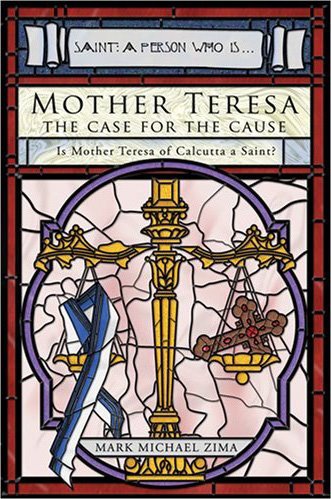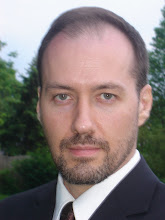
SHE looks nothing like the nuns who taught me at St Joachim's, those good sisters who would all but fall to their knees at the approach of a priest.
Colette Livermore, however, spent 11 years within the physical and mental cloisters of religious life and discovered therein the shadows and demons which still torment her.
A gifted student who won a university scholarship to study medicine, she chose instead to follow Mother Teresa and joined the Sisters of Charity.
She now lives in coastal New South Wales and is in town for the day. We meet in the brasserie at the Stamford Hotel and she relates why she became a nun.
"When I was a kid, the Biafran famine was in the news. Kids were dying on the television set in front of you. I thought to myself that this couldn't be right and then I saw a Mother Teresa film and thought: 'That's the way to go! Get out there and do something!' I was very naive. I didn't appreciate the implications," she says.
It was not long before she realised that there were two sides to the saintly persona of Mother Teresa which the media had spun.
"Any organisation that demands you stick to a rigid timetable and do exactly what you're told is on the road to inhumanity, and I think and that was the problem," she says.
"Mother Teresa asked you to give up your brain, your will, everything. She asked for total surrender of the person.
"I grew up in Mossvale on the southern highlands of New South Wales and when I joined the order I went to Melbourne to the novitiate straight from school. I was just 18. It was a big change in life.
"Once you're within that sort of organisation, it's hard to get your bearings. You're off balance because Mother Teresa is a saintly person and the winner of the Nobel Peace Prize and all that sort of thing so you think that if you disagree with things, there must be something wrong with you rather than the organisation.
"We did our training and then I was sent to the Gulf province of New Guinea without any warning or preparation and nearly died of cerebral malaria.
"I was there for a few years and then transferred to Manila and worked in a garbage dump looking after people with tuberculosis. I wasn't even trained to the level of a barefoot doctor."
From Manila, Livermore was sent to Calcutta and it was there she tried and failed to leave the order. "You're always told that you're sinful and proud and all that sort of thing. It played with my mind. I realised things weren't right but I couldn't get any external bearings.
"You're cut off. You can't listen to the radio or read the newspapers or talk to friends. You have very little contact with your family. Your mind is only hearing one opinion. There's only one voice speaking. It's difficult to leave when Mother Teresa is telling you that it's to do with the devil."
Livermore's disaffection with Mother Teresa peaked when she clashed with her superiors over a decision not to treat sick children on a holy day.
"A ruling was made that on this recollection day, this day of prayer, children were not to be admitted to the Home for the Children.
"This really sick child came in with stick arms, breathing really fast and dehydrated and I was told he couldn't stay. I had this internal conflict and eventually the child was admitted but only after I'd had a big fight.
"These sorts of things happened time and time again because there was this rigid obedience and timetable, so I wrote to Calcutta and said: 'This can't be right.'
Mother Teresa's reply was not the one Livermore had hoped for. "She said that just as Our Lady watched Jesus die, I should be able to accept the death of a child if obedience asked it of me.
"Then I said: 'That's against the gospel' and they said that even the devil could quote scripture."
Livermore's portrait of Mother Teresa is of a woman tortured by her own spirituality.
"It led her to some pretty dark places," she says. "She talked about her inner emptiness and misery. She said 'Empty yourself of all that's not God.' She just felt depleted and that's what happened to all of us too."
Livermore's mother, who had been opposed to her joining the order, knew nothing of this. "My family wasn't aware because you weren't supposed to tell anyone. It was a secret.
"Mum was disappointed I'd thrown away the chance to do medicine because our family struggled. My father had left us and she was struggling to support four kids and for her eldest to take off was hard."
Livermore eventually wrote to Mother Teresa telling her she could no longer cope.
"She said she thought it was the devil, the Father of Lies, trying to rob me of my vocation and get me off the track but I couldn't do it any more. It was screwing my head around. I was 30 and I'd been in there 11 years."
Livermore describes the order as a sect and has written a book, Hope Endures, chronicling her experiences.
Mother Teresa's mistake, says Livermore, was in thinking that obedience was more important than compassion.
"That's not something that's widely known and not part of what the media says about her. It was dictatorial. I should have got out sooner," she says, shaking her head.
When she finally left, she turned to the medical degree she had spurned when she joined the sisters and became a doctor, working in Timor, the Northern Territory, the Congo, Sudan and Darfur.
One casualty of her time with Mother Teresa was her religion.
" I ended up an agnostic," she says. "I just couldn't believe it any more but if, as when I was in Timor from 2000-2003, you can do something for the kids, then for some people at least, you can make a difference."
Livermore blames no one but herself for what happened.
"After all," she says, smiling, "no one handcuffed me. It was my own silly choice. My mother told me I was a drongo but once I was in there, I couldn't get free.
"That's part of the reason I wrote the book - to tell religious people not to give up that inner compass that they have. You can't live your life with all these excluding rules."
She says the problems within the order are exemplified by the nuns' practice of self-flagellation, whipping themselves to try to imitate Christ's suffering.
"Suffering comes your way and you have to put up with it but," she says, "but it's sort of warped to go looking for it."
* Hope Endures by Colette Livermore, William Heinemann Australia, $34.95




